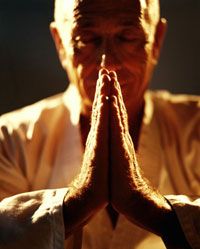Think of your normal dreams, the bizarre plots and nonnarrative structure that leaves you scrambling for words to try to explain it to a friend. Now put yourself back in the dream but imagine the details.
You're flying through the air, but you can look at the clouds and the ground below, feel the wind whooshing against your skin, smell the clean air. And in the dream, you think, "I'm dreaming that I'm flying."
The Science Behind Lucid Dreams
Lucid dreaming occurs during REM sleep, the fifth sleep stage. The body is basically paralyzed, with the exception of the eyelids. In the experiment we mentioned before, subjects took advantage of this quality of REM sleep, using prearranged eyelid movements to signal that they were dreaming.
We aren't sure what's going on in the brain during lucid dreaming. According to Dr. Matthew Walker, director of a sleep lab at Berkeley, the lateral prefrontal cortex, a part of the brain that deals with logic, may be responsible [source: The New York Times].
During REM sleep, this part of the brain is supposed to be "asleep," but it's possible that it "wakes up" so that dreaming and logic are both working at the same time, enabling the dreamer to recognize the dream situation for what it is.
The grand idea of lucid dreaming is all about control. In your dream, you could consciously decide to visit a specific place — say, Provence, France — and your dream self would obey the waking mind.
Potential Applications
The possibility of controlling the mind even in sleep has led some researchers to consider lucid dreaming as a treatment for nightmares. One study showed that lucid dreaming exercises caused a group of chronic nightmare sufferers to have nightmares less often [source: Spoormaker and van den Bout].
The practical implications for dream control are enormous. People suffering from post-traumatic stress disorder or children plagued by bad dreams could be taught to salvage their sleep and get some rest.
You could even take it a step further to a scarier conclusion: Think of the CIA's mind-control experiments with LSD and hypnosis. Imagine what kind of control a government may have if it could figure out how to manipulate the enemy's dreams.
Out-of-body Experiences
Some researchers have suggested that out-of-body experiences (OBEs) are a type of lucid dream. During an out-of-body experience, a person sees their physical body as if they are located somewhere outside it. A person undergoing an operation might feel as if they are actually floating above their body and looking down on it.
Scientists Lynne Levitan and Stephen LaBerge counter that OBEs are almost the opposite of a lucid dream — lucid dreamers know they're in a dream, while people having an OBE think everything's real [source: Levitan and LaBerge].






